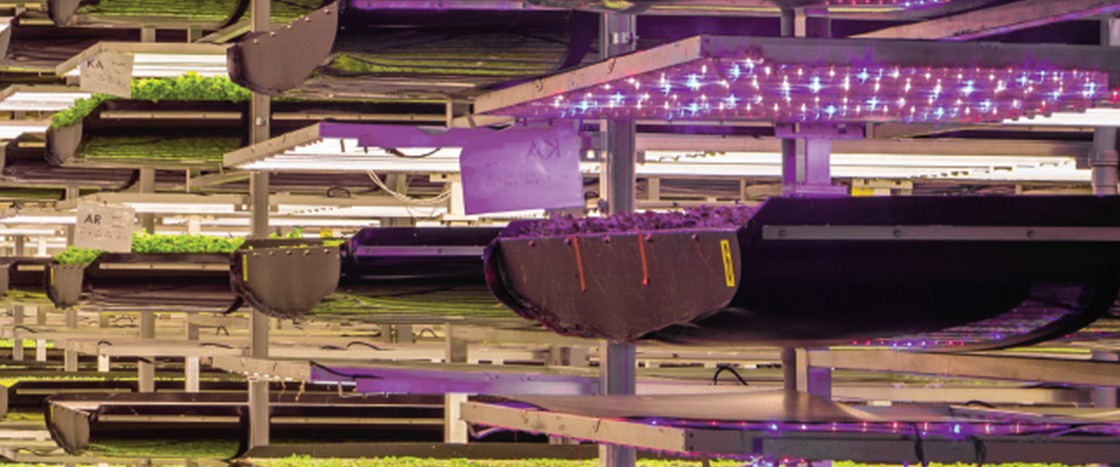Most farms have rows of crops in the ground. But inside a warehouse in Newark, New Jersey, you’ll find a different kind of farm. At AeroFarms, trays of leafy green plants are stacked 11 meters (36 feet) high. And they’re not growing in soil—they’re growing in air!
The site, which opened in 2016, is one of many vertical farms popping up around the world. These multistory structures are designed to grow food indoors. Vertical farms can carefully control the plants’ environment, such as temperature, light, and water. That allows the farms to grow fresh food year-round.
Vertical farms have many benefits. They use less water than traditional farms. They don’t need to use chemicals to control pests. Though vertical farms require more electricity than traditional farms do, they often use solar power or other types of renewable energy that will never be used up.
Most farms have rows of crops in the ground. But you’ll find a different kind of farm in Newark, New Jersey. It’s called AeroFarms. And it’s inside a warehouse. Trays of leafy green plants fill the building. They’re stacked 11 meters (36 feet) high. And they’re not growing in soil. They’re growing in air!
The site opened in 2016. It’s one of many vertical farms around the world. These tall buildings are built to grow food indoors. Vertical farms carefully monitor plants. They control their temperature, light, and water. That allows the farms to grow fresh food year-round.
Vertical farms have many benefits. They use less water than regular farms. They don’t need to use chemicals to control pests. Vertical farms do need more electricity than normal farms. But it often comes from solar power or other types of renewable energy. These energy sources will never be used up.

